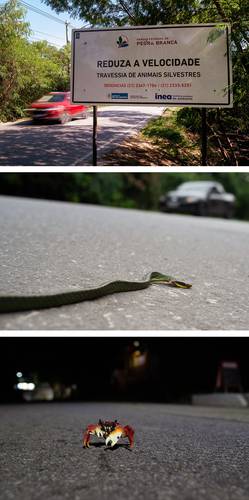A project in Rio de Janeiro is aiming to reduce wildlife collisions in Brazil through the use of artificial intelligence (AI) technology. According to the Brazilian Center for Studies in Road Ecology (CBEE), 475 million animals die each year on Brazilian roads, with vertebrate animals like birds, frogs, and mammals being the most affected. Species like the capybara, armadillo, and opossum are among those most commonly hit by cars.
Gabriel Souto Ferrante, a student at the University of Sao Paulo, has been developing a system based on computer vision to detect species and alert drivers of their presence on the road. He has identified five medium- and large-sized species, including the puma, tapir, and jaguarundi, that are most at risk of being run over on Brazil’s roads. Souto has conducted extensive testing to ensure the success of his AI model, but further testing and support from road management companies are needed to implement the technology effectively.
To address habitat fragmentation caused by roads, various strategies have been implemented in Brazil, including ecological corridors, green bridges, and underpasses. These measures aim to ensure safe passage for animals and reduce the impact of roadkill. However, the infrastructure is still insufficient in a country as vast as Brazil.
Efforts like the Urubú System, a citizen science social network created by CBEE coordinator Alex Bager, have helped collect data on roadkill incidents and inform public policies. Despite financial constraints, Bager remains committed to reactivating the platform to address the growing issue of wildlife collisions on Brazilian roads. With increasing road development and vehicle traffic, finding sustainable solutions to protect wildlife is more important than ever.
